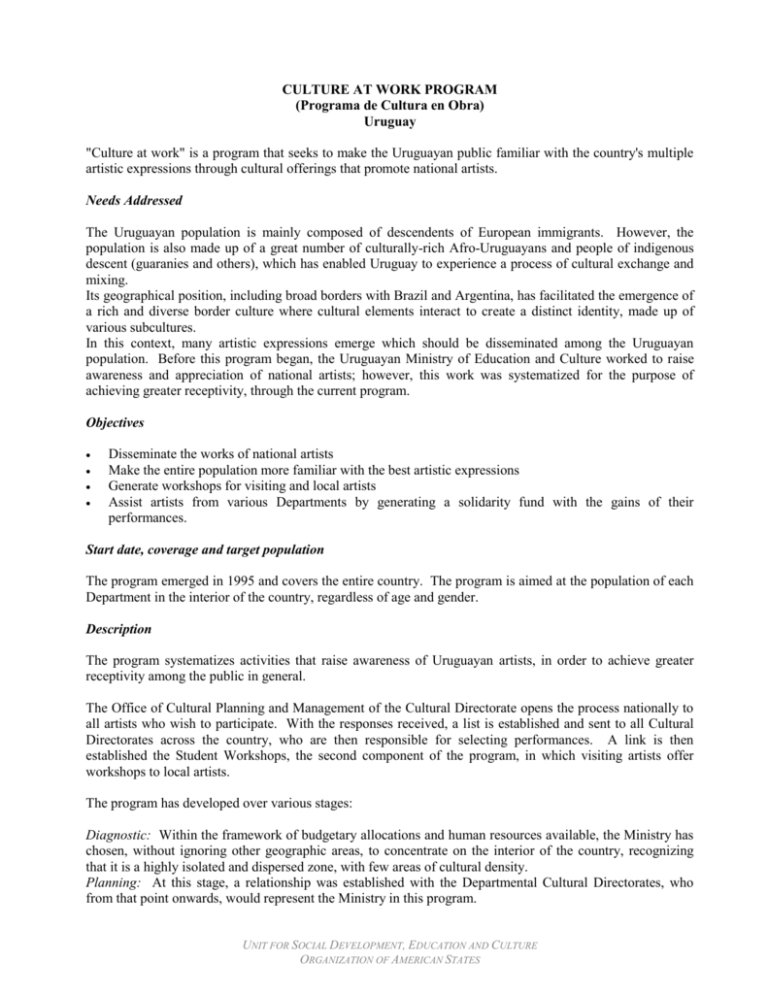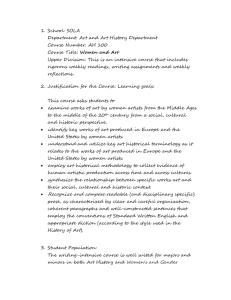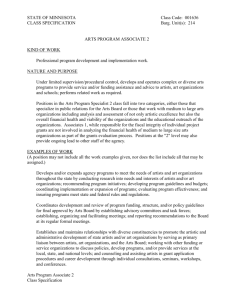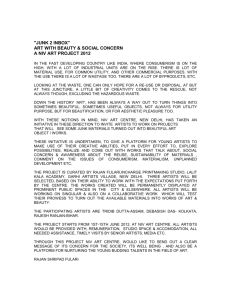CULTURE AT WORK PROGRAM
advertisement

CULTURE AT WORK PROGRAM (Programa de Cultura en Obra) Uruguay "Culture at work" is a program that seeks to make the Uruguayan public familiar with the country's multiple artistic expressions through cultural offerings that promote national artists. Needs Addressed The Uruguayan population is mainly composed of descendents of European immigrants. However, the population is also made up of a great number of culturally-rich Afro-Uruguayans and people of indigenous descent (guaranies and others), which has enabled Uruguay to experience a process of cultural exchange and mixing. Its geographical position, including broad borders with Brazil and Argentina, has facilitated the emergence of a rich and diverse border culture where cultural elements interact to create a distinct identity, made up of various subcultures. In this context, many artistic expressions emerge which should be disseminated among the Uruguayan population. Before this program began, the Uruguayan Ministry of Education and Culture worked to raise awareness and appreciation of national artists; however, this work was systematized for the purpose of achieving greater receptivity, through the current program. Objectives Disseminate the works of national artists Make the entire population more familiar with the best artistic expressions Generate workshops for visiting and local artists Assist artists from various Departments by generating a solidarity fund with the gains of their performances. Start date, coverage and target population The program emerged in 1995 and covers the entire country. The program is aimed at the population of each Department in the interior of the country, regardless of age and gender. Description The program systematizes activities that raise awareness of Uruguayan artists, in order to achieve greater receptivity among the public in general. The Office of Cultural Planning and Management of the Cultural Directorate opens the process nationally to all artists who wish to participate. With the responses received, a list is established and sent to all Cultural Directorates across the country, who are then responsible for selecting performances. A link is then established the Student Workshops, the second component of the program, in which visiting artists offer workshops to local artists. The program has developed over various stages: Diagnostic: Within the framework of budgetary allocations and human resources available, the Ministry has chosen, without ignoring other geographic areas, to concentrate on the interior of the country, recognizing that it is a highly isolated and dispersed zone, with few areas of cultural density. Planning: At this stage, a relationship was established with the Departmental Cultural Directorates, who from that point onwards, would represent the Ministry in this program. UNIT FOR SOCIAL DEVELOPMENT, EDUCATION AND CULTURE ORGANIZATION OF AMERICAN STATES Design: A high quality cultural offering is designed, which is based on four months of activities that will achieve a big impact. Evaluation: An annual evaluation is undertaken in which the Departmental Cultural Directors, artists and public participate. The program has undergone improvements and changes according to the evaluation. Sources of Finance The program is financed by the Ministry of Education and Culture, which is the organ that covers the honorarium and transportation costs for the artists and by the Departments of Culture at the regional level, which are responsible for the infrastructure of each performance (theatres, exhibition rooms, etc.) and for the care of the artists (lodging, food etc.) Program Strengths The cultural offering is made up of a list that is selected according to the following criteria: level of representation, popularity, plurality, diversity and of course, artistic quality. Achievements The successful promotion of artists in the interior of the country for more than 7 years. A significant audience increase at artistic events promoted by the program and through other initiatives. Growing artist interest to participate in the program due to the revenues it generates. Challenges The program is evaluated annually by the Cultural Directorate in cooperation with the Departmental Cultural Directorates. Throughout the years, the program has undergone changes and improvements according to the experiences of those involved. A larger budget is needed to broaden the reach of the program. UNIT FOR SOCIAL DEVELOPMENT, EDUCATION AND CULTURE ORGANIZATION OF AMERICAN STATES






